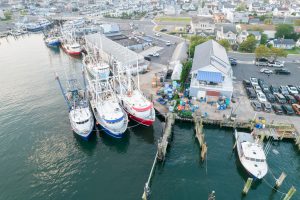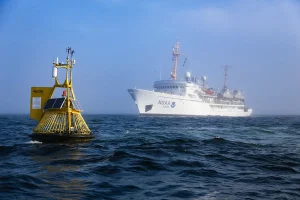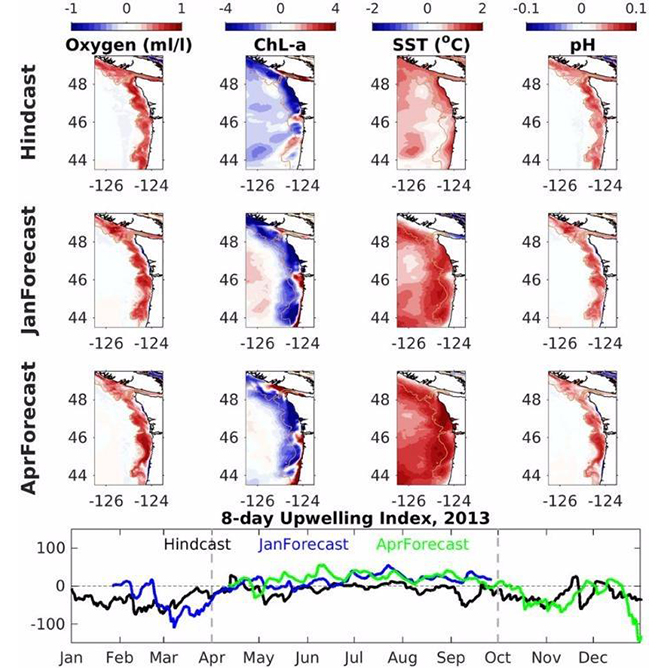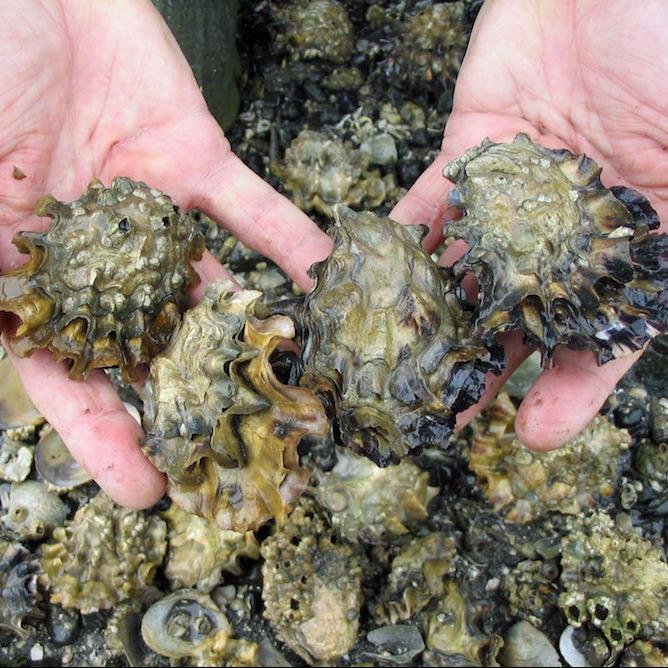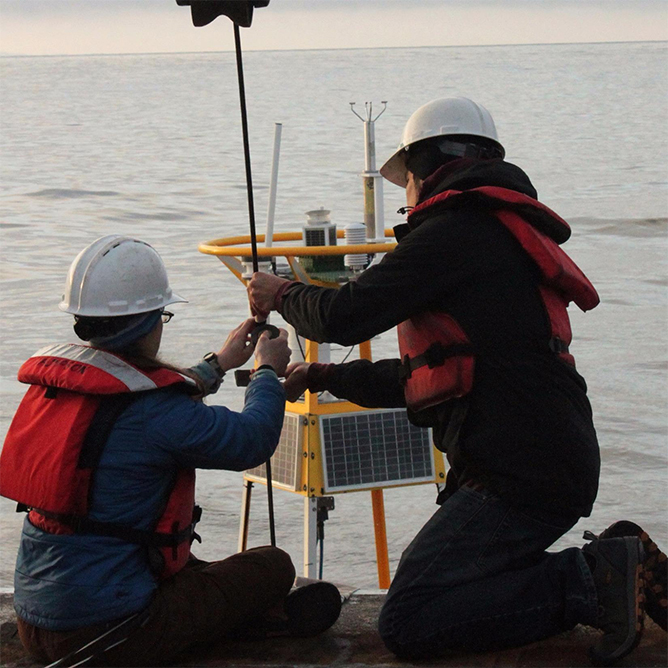By: NOAA Ocean Acidification Program
NOAA and partners launch research cruise of East Coast to study ocean acidification
NOAA and scientists from Princeton, Old Dominion University, and the Universities of New Hampshire, Delaware, and Miami set off on June 19th from Newport, Rhode Island aboard NOAA ship Gordon Gunter on a research cruise to better understand ocean acidification and its drivers along the U.S. East Coast.

The R/V Gordon Gunter stationed in Newport, RI will be surveying carbonate chemistry on a 34 day research cruise,which began in the Canadian Maritime waters and will end along the Florida coast. Principal investigators of the expedition are Dr. Joe Salisbury from University of New Hampshire and Dr. Janet Reimer from University of Delaware Photo credit: Marc Emond, University of New Hampshire.
This research cruise is just one part of a larger effort supported by the NOAA Ocean Acidification Program to better understand how ocean chemistry along all the U.S. coasts is changing in response to ocean acidification and where marine organisms may be at greatest risk. Similar cruises have taken place on the U.S. West Coast and the Gulf of Mexico. Understanding why and how fast our ocean chemistry is changing in different areas will allow scientists to better predict future changes and explore ways to adapt to those shifts.
The Gunter will travel north to survey the waters of the Nova Scotia Shelf and will then steam south, surveying waters close to shore to provide more detailed information about water chemistry within the Gulf of Maine, Long Island Sound, the Mid-Atlantic and Southern Bight regions than previous surveys. The ship will also investigate central Florida waters before reaching Miami on July 24.”
“We will be covering a larger area of the East Coast and going much closer to shore than ever before so that we can better understand the many factors contributing to ocean acidification,” said Dwight Gledhill, Deputy Director of the NOAA Ocean Acidification Program.
This is the first time that scientists will get an in depth view of the waters in the Gulf of Maine.
“Understanding the chemistry of water on the Scotian Shelf is critical for us to understand how ocean acidification might unfold in Maine,” Gledhill says, “The Labrador Current, which flows over the shelf and into this region is freshening due to climate change and increased Arctic ice melt. These fresher waters are more corrosive, so understanding how that will affect Maine waters is an important part of this survey.””
By collecting and analyzing water samples in near shore and deeper waters, scientists will better understand what drives the process of ocean acidification in different areas of the East Coast shelf. Another area new to the survey is Long Island Sound, an urbanized estuary, which is known to become acidic with low oxygen or hypoxia events. This is the first time that both carbon dioxide and oxygen, along with nutrient levels will be measured in these waters. These measurements may give insight into how nutrient run off from land based activities will impact seawater chemistry in this area.


The ship will come to port in Norfolk, Va., on July 4 before continuing south. Throughout the entire survey, scientists on board will also look at how single-celled marine plants, or phytoplankton, affect ocean chemistry. Tracking ocean acidification which is caused in large part by an increase in atmospheric carbon dioxide from the burning of fossil fuels, demands careful determination of not only the marine carbonate system, but also a suite of measures that give insight into the key organisms which can modify the chemistry. Both photosynthesis and respiration of these small marine plants and other tiny organisms can alter carbon dioxide levels in the water.
Scientists will measure both carbon and oxygen in the water to better understand how they affect the growth of phytoplankton that are at the base of the food chain. Phytoplankton are not only important to the marine food chain, but these marine plants also control carbon chemistry. Scientists from the National Aeronautic and Space Administration (NASA) are working to use satellite capabilities to “see” the kind phytoplankton in the ocean by identifying the color of the ocean. Researchers on board the Gunter will sample phytoplankton in the water as a NASA satellite measures the ocean’s color in the same location.
“There are only a few things you can measure from space such as temperature, salinity and ocean color,” says Gledhill. “If we can confirm what phytoplankton are in the water at the same time the satellite is over head, while also measuring carbon chemistry this could allow scientists to relate changes in carbon chemistry to the types of phytoplankton in the water sometime in the future.”
This cruise will cover new areas and get more in depth information along the U.S. East Coast to understand the factors that influence ocean and coastal acidification. Because the East Coast has a broad shallow shelf, potentially corrosive, freshwater discharge out of rivers into the coastal ocean could be a major contributor to changing ocean chemistry. This survey will allow scientists to understand how fresher waters, coastal influences, and phytoplankton may alter our ocean chemistry. This environmental information on ocean acidification is essential to predicting its effects on important marine resources, so that communities can mitigate and adapt to these changes.

